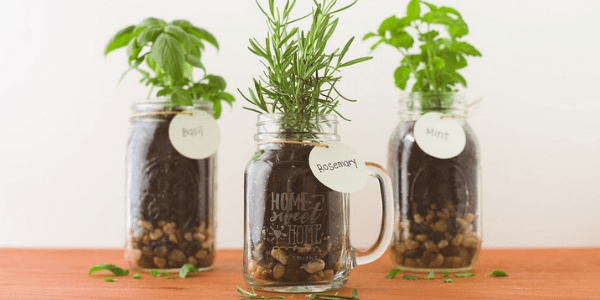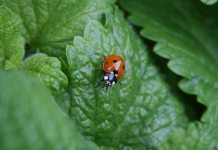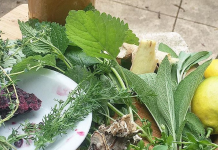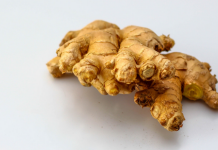 Herbalism is undergoing something of a revival. Indeed, a quick Internet search will throw up hundreds of hits, whether that’s the latest Instagrammer, courses on the subject, and so on. But for those of us with nature-based spiritualities, it’s no surprise that so many of us have more than a passing interest in plants, and learning how to use them. With so many resources available, you’d think that getting started on the herbal path would be easy, and it can be, but first you need to know where to start.
Herbalism is undergoing something of a revival. Indeed, a quick Internet search will throw up hundreds of hits, whether that’s the latest Instagrammer, courses on the subject, and so on. But for those of us with nature-based spiritualities, it’s no surprise that so many of us have more than a passing interest in plants, and learning how to use them. With so many resources available, you’d think that getting started on the herbal path would be easy, and it can be, but first you need to know where to start. Practical experience
Herbalism should be accessible to all, regardless of income, and the best way to learn about herbalism is through practical experience. It doesn’t matter how much book knowledge you acquire, one day you will have to put away the books and get physical! As a Pagan and a witch, I find that there is so much more than simply which plant can be used for what. As an animist, herbalism is about working with the spirits of plant and nature, and such a relationship adds to the potency of the plants. Of course, you don’t need to be any of those things in order to practise herbalism and the more experienced you become, you will feel that connection to nature begin to grow. With that said though, magical uses for plants can range from flowers and herbs for incense blends or to use in spellwork or as offerings right through to the making of ointments. There is a lot of crossover in between the magical and the mundane. For instance many plants can be used medicinally in the treatment of minor ailments (elderberries are excellent to help treat a cold) and then there are different teas to make and drink, food to eat, the list is endless! There are so many benefits to practising herbalism, besides the connection to nature and the magical and medicinal uses of plants. Spending time outside is good for us as a species, and herbalism is a good way to get involved with your local community, whether that’s passing on what you learn or even just getting to know where you live on a different level. So many people think that “nothing” grows where they live, but once they begin their herbal journey, well, it’s like looking at your environment with new eyes! You see the interconnections between everything, of not only the plants, but also of the critters and creatures that rely on them for food and shelter. With this quick guide, you’ll soon be on your way to building that experience for yourself.
Tools
So, what will you need to begin your own herbalism practise? The truth is not a lot! A sharp pair of scissors or a knife is a must for snipping off flowering tips, leaves and stems. Anything that is blunt will damage the plant, and the aim is to cause as little disruption to the plant as possible. With some plants you will just need to harvest the flowers, for example, with calendula or chamomile, whereas with others it might be the flowers and the leaves, such as wormwood and mugwort. You’ll also need a good plant identification guide. Perhaps this is the most important aspect of herbalism: knowing what you are collecting. Get a book with detailed photographs that show the flower, the leaves, and the whole plant. My favourite books to use are Wild Flowers of Britain and Northern Ireland. DK also publishes a good range of books called What’s That Tree? and What’s That Flower? Make sure that whatever book you choose is relevant to where you live. After all, you don’t want a book that shows you the flowers of Britain, if you live in a different country.
You’ll also need a good plant identification guide. Perhaps this is the most important aspect of herbalism: knowing what you are collecting. Get a book with detailed photographs that show the flower, the leaves, and the whole plant. My favourite books to use are Wild Flowers of Britain and Northern Ireland. DK also publishes a good range of books called What’s That Tree? and What’s That Flower? Make sure that whatever book you choose is relevant to where you live. After all, you don’t want a book that shows you the flowers of Britain, if you live in a different country. Related: The Witching Herbs, reviewed by Laura Gyre
Related: Herbs versus Plant Magic: A comparative review, reviewed by Donyae Coles
Related: The Green Wiccan Herbal, reviewed by Kait Fowlie
I really cannot emphasize how important it is to be absolutely certain to correctly identify plants before you harvest them. So many plants, especially those within the same family, can look very similar, but can have very different applications. For example, ground elder looks very similar to yarrow, poison hemlock, and hogweed, and it would be easy to confuse one for the other. However, hemlock is poisonous and hogweed, when it comes into contact with the skin, photosynthesizes causing the skin to burn and blister, hence the need for careful and correct identification. Alongside identification, you will also need to learn about the uses of individual plants. I’m afraid there are no shortcuts for this, but there are so many resources available to us today that it is easier than it has ever been. There are so many reliable books and websites (including this one!), as well as apps for your phone. As you learn what grows around you and the uses for these plants, you’ll soon find your knowledge base growing. I use lavender a lot, in baking, beauty and the home (it has a strong smelling but lovely scent, perfect for potpourri). Roses are another plant with a wide variety of uses, both magical and mundane, though I like to use them in beauty products and bathing. (Run a bath as hot as you can stand, light some candles and throw in a handful of crunched petals — perfect for when you are stressed!) I also use rose thorns in protective magick. And then there are the culinary herbs I use in everyday cooking — there is no end to the usefulness of plants!Related: Springtime kitchen witchery: 10 herbs for protection, peace, and luck, by Donyae Coles
Related: Four Thieves: From medicine to magick, by Anie Savino
Related: Everyday hoodoo: Washes, mojo bags, and simple charms, by Donyae Coles

Go outside
Well, know we’ve covered the very basics, it’s time to get out and about! The best place to start on your herbalism journey is to begin with where you live. Now, granted, it might be slightly more difficult for the city dwellers amongst us, but it’s not impossible! There will be parks and other patches where nature flourishes, for she abhors a vacuum. The reason I say start with where you live is because those plants will be readily available to you. Whilst more exotic plants may seem exciting and can be bought online, I think back to the wise women and the cunning men of old, and how they would have used plants that grew locally. Having that knowledge of local plants is something that cannot be replaced. For example, where I live mugwort grows abundantly and yet, for years I could never find wormwood and had given up of ever finding it where I live, but then last year I found a whole field full! In the spring it starts as small clumps that you might easily miss, however their soft and silvery leaves are easy to identify. As the season progresses and moves into Summer, the plant grows to up to a metre high and in August the spikes of tiny flowers open. That kind of knowledge is priceless. So, make an effort to get out and explore what’s around where you live. Go for walks along riversides, in the woods, through fields, and along hedgerows. Really pay attention to what grows there throughout the different seasons, and learn to identify plants, trees, and flowers. Soon you’ll begin to notice how much you just enjoy being outside. (Don’t say I didn’t warn you!)








